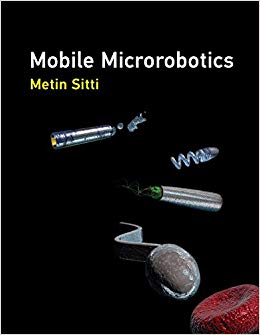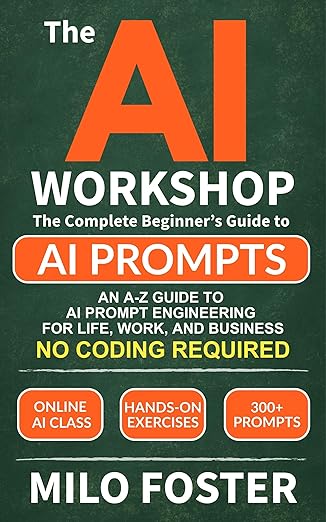The first textbook on micron-scale mobile robotics, introducing the fundamentals of design, analysis, fabrication, and control, and drawing on case studies of existing approaches.
Progress in micro- and nano-scale science and technology has created a demand for new microsystems for high-impact applications in healthcare, biotechnology, manufacturing, and mobile sensor networks. The new robotics field of microrobotics has emerged to extend our interactions and explorations to sub-millimeter scales. This is the first textbook on micron-scale mobile robotics, introducing the fundamentals of design, analysis, fabrication, and control, and drawing on case studies of existing approaches.
The book covers the scaling laws that can be used to determine the dominant forces and effects at the micron scale; models forces acting on microrobots, including surface forces, friction, and viscous drag; and describes such possible microfabrication techniques as photo-lithography, bulk micromachining, and deep reactive ion etching. It presents on-board and remote sensing methods, noting that remote sensors are currently more feasible; studies possible on-board microactuators; discusses self-propulsion methods that use self-generated local gradients and fields or biological cells in liquid environments; and describes remote microrobot actuation methods for use in limited spaces such as inside the human body. It covers possible on-board powering methods, indispensable in future medical and other applications; locomotion methods for robots on surfaces, in liquids, in air, and on fluid-air interfaces; and the challenges of microrobot localization and control, in particular multi-robot control methods for magnetic microrobots. Finally, the book addresses current and future applications, including noninvasive medical diagnosis and treatment, environmental remediation, and scientific tools.
چکیده فارسی
اولین کتاب درسی رباتیک متحرک در مقیاس میکرونی، با معرفی مبانی طراحی، تجزیه و تحلیل، ساخت، و کنترل، و ترسیم از مطالعات موردی رویکردهای موجود.
پیشرفت در علم و فناوری در مقیاس میکرو و نانو، تقاضایی برای میکروسیستمهای جدید برای کاربردهای پرتأثیر در مراقبتهای بهداشتی، بیوتکنولوژی، تولید و شبکههای حسگر سیار ایجاد کرده است. حوزه رباتیک جدید میکرورباتیک برای گسترش تعاملات و کاوش های ما تا مقیاس های زیر میلی متری پدید آمده است. این اولین کتاب درسی رباتیک متحرک در مقیاس میکرونی است که مبانی طراحی، تجزیه و تحلیل، ساخت و کنترل را معرفی می کند و از مطالعات موردی رویکردهای موجود استفاده می کند.
این کتاب قوانین مقیاسبندی را پوشش میدهد که میتوان از آنها برای تعیین نیروها و اثرات غالب در مقیاس میکرونی استفاده کرد. مدلسازی نیروهای وارد بر میکرورباتها، از جمله نیروهای سطحی، اصطکاک، و کشش چسبناک. و تکنیکهای ریزساخت ممکن را مانند فوتو لیتوگرافی، ریزماشین کاری فله، و اچ کردن یون واکنشی عمیق توصیف میکند. این روشهای سنجش از راه دور و درونبرد را ارائه میکند و اشاره میکند که سنسورهای از راه دور در حال حاضر امکانپذیرتر هستند. ریزمحرک های احتمالی روی برد را مطالعه می کند. روشهای خود رانش را مورد بحث قرار میدهد که از گرادیانها و میدانهای محلی یا سلولهای بیولوژیکی خود تولید شده در محیطهای مایع استفاده میکنند. و روش های فعال سازی میکروربات از راه دور را برای استفاده در فضاهای محدود مانند داخل بدن انسان شرح می دهد. این روشهای احتمالی تغذیه روی برد را پوشش میدهد که در برنامههای پزشکی و سایر کاربردهای آینده ضروری است. روشهای حرکت برای روباتها بر روی سطوح، در مایعات، در هوا، و در رابطهای سیال-هوا. و چالشهای محلیسازی و کنترل میکرورباتها، بهویژه روشهای کنترل چند روباتی برای میکرورباتهای مغناطیسی. در نهایت، این کتاب به کاربردهای فعلی و آینده، از جمله تشخیص و درمان پزشکی غیرتهاجمی، اصلاح محیطی، و ابزارهای علمی میپردازد.
ادامه ...
بستن ...
Ebook details:
عنوان: Mobile Microrobotics (Intelligent Robotics and Autonomous Agents series)
نویسنده: Metin Sitti
ناشر: The MIT Press (June 9, 2017)
زبان: English
شابک: 9780262036436, 978-0262036436
حجم: 96 Mb
فرمت: Image pdf with ocr
ادامه ...
بستن ...










